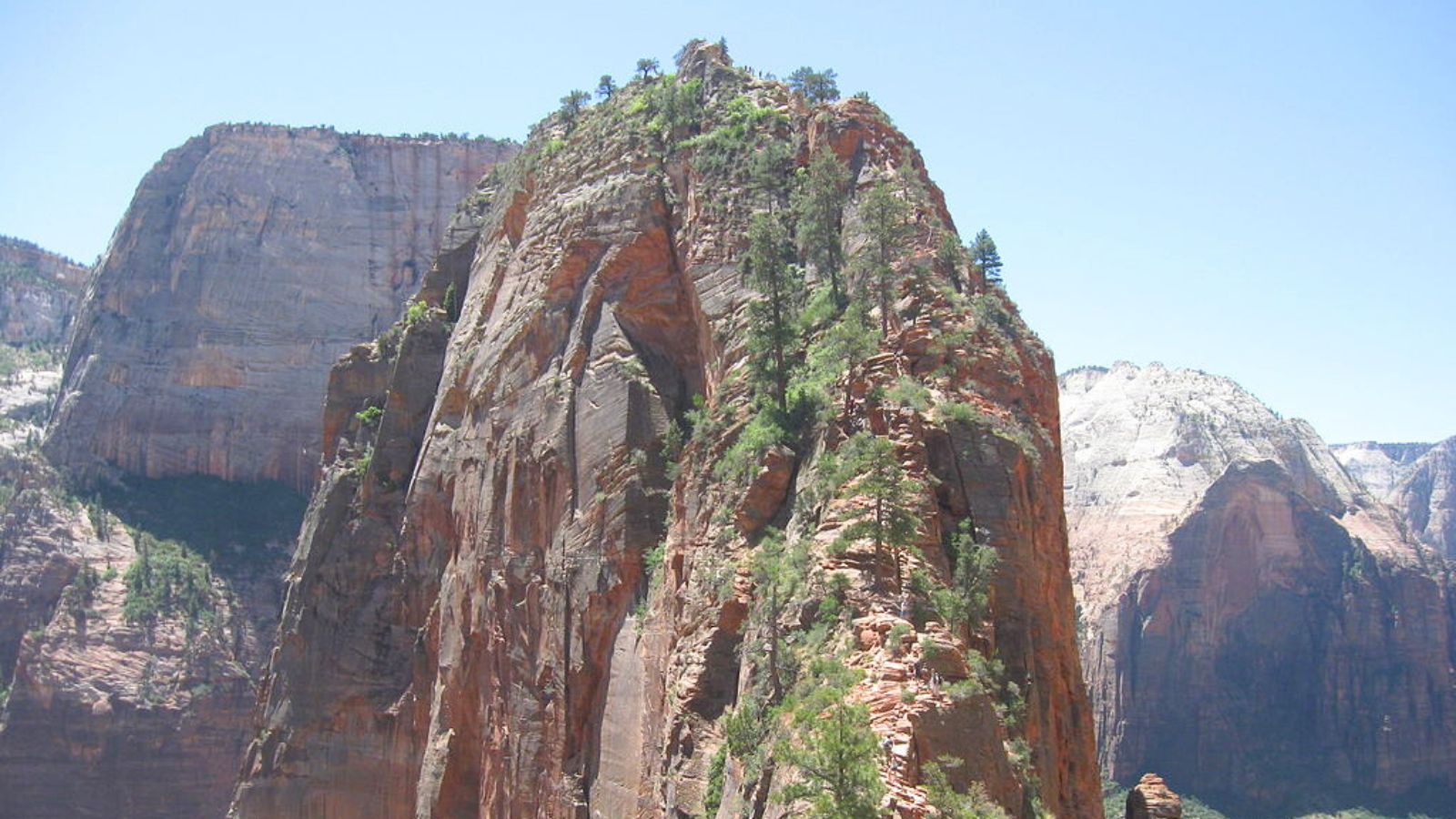The United States boasts many of the world’s best hikes. These trails run the gamut from beginner-friendly to experts-only and take you through the country’s most breathtaking landscapes. However, many of them also have a reputation for being deadly. Here are 9 of the scariest…
1. Kalalau Trail, Napali Coast, Hawaii
The Kalalau Trail spans 11 miles along the rugged Napali Coast of Kauai, Hawaii (22 miles out and back). It features narrow paths, steep cliffs, and sections with loose rocks. The trail is subject to unpredictable weather, which can lead to dangerous conditions and trail closures.
Hikers must navigate several challenging sections. The most famous is called Crawler’s Ledge, a narrow path with sheer drop-offs, and river crossings that can become impassable during high water. Strong currents at remote beaches here can be equally treacherous.
2. The Maze, Canyonlands National Park, Utah
The Maze is a remote and rugged area located in the western part of Canyonlands National Park. It is characterized by its intricate network of canyons, towering mesas, and challenging terrain. Hiking in the Maze requires advanced route-finding skills, as trails are scarce, and navigation can be challenging among the canyons. Water sources are limited, and hikers must carry sufficient supplies for the duration of their trip.
3. Angel’s Landing, Zion National Park, Utah
Angel’s Landing is a prominent rock formation in Zion National Park, reached via a strenuous trail that ascends steeply to a narrow ridge. The final stretch involves traversing a narrow ridge with sheer drops on either side, protected only by chains anchored to the rock. Despite safety measures, many fatalities have occurred on Angel’s Landing due to falls and missteps.
4. Mount Washington, New Hampshire
Mount Washington, part of the Presidential Range in the White Mountains, is notorious for its unpredictable and severe weather conditions. Indeed, the summit of Mount Washington holds the world record for the highest wind speed ever recorded at the Earth’s surface. Hikers can experience rapidly changing weather, including high winds, fog, snow, and freezing temperatures.
5. The Narrows, Zion National Park, Utah
The Narrows is a slot canyon hike in Zion National Park, where hikers wade through the Virgin River between towering canyon walls. Flash floods are a significant risk in the Narrows, which cause the river to swell rapidly and trap hikers in narrow passages. The terrain is uneven and slippery, with submerged rocks and deep pools posing additional hazards to hikers.
6. Longs Peak, Rocky Mountain National Park, Colorado
Longs Peak is one of Colorado’s most challenging fourteeners, standing at 14,259 feet above sea level. The Keyhole Route, the most popular route to the summit, involves scrambling over boulders, negotiating steep sections, and traversing exposed ledges.
Hikers are exposed to rapidly changing weather conditions, including lightning storms, high winds, and snow, particularly in the afternoon. Altitude sickness is a common concern on Longs Peak due to the high elevation.
7. Knife Edge, Katahdin, Baxter State Park, Maine
The Knife Edge trail is a narrow and exposed ridge that connects Baxter Peak to Pamola Peak on Mount Katahdin, the highest peak in Maine. A 1.1 mile scramble, hiking the Knife Edge requires careful foot placement and a head for heights, as the trail features sheer drop-offs on either side. Weather conditions can be severe, with high winds, fog, and sudden storms posing additional challenges.
8. The Subway, Zion National Park, Utah
The Subway is a strenuous slot canyon hike in Zion National Park, featuring narrow passages, slickrock scrambles, and cold-water wading. Flash floods are a concern in the Subway, as rainwater from storms upstream can cause water levels to rise rapidly, trapping hikers in the canyon. Navigation can be challenging in the Subway, as there are multiple route options and obstacles to negotiate, including potholes and waterfalls.
9. Cables Route, Half Dome, Yosemite National Park, California
The Cables Route on Half Dome is a challenging ascent that involves climbing steep granite slopes using metal cables for assistance. The route is physically demanding, requiring upper body strength and endurance to pull oneself up the cables. The exposure and steepness of the route can be intimidating for some hikers, particularly during periods of high traffic or inclement weather. Safety precautions, including harnesses and gloves, are recommended for hikers attempting the Cables Route.

